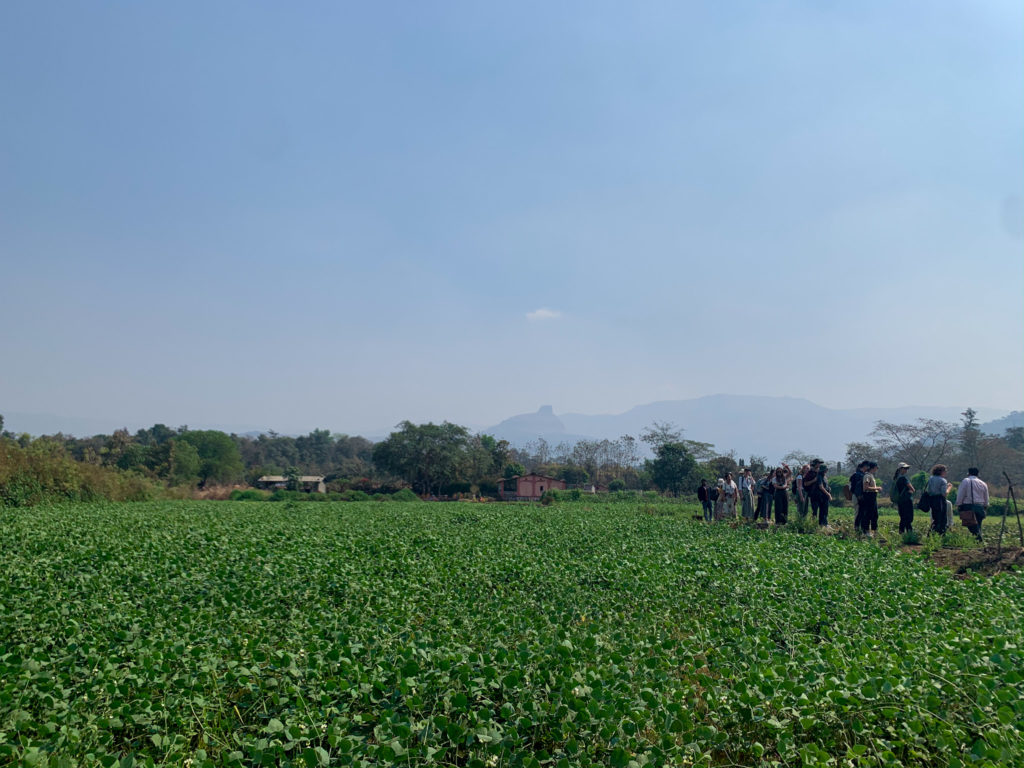By Murray Gatt
Bachelor of Arts and Bachelor of Laws
Today we visited the rural village of Mograj within the state of Maharashtra. I was interested to learn how this region would compare to our experience of Mumbai, in particular the spatial formation of social and economic inequalities we had observed.
Extravagant shopping malls in Navi Mumbai are situated in close proximity to slums like those in M East Ward. This contradiction continued on our journey towards the village, with the densely populated yet underdeveloped landscape scattered with resorts and high-rise developments.
The farming land in Mograj remains contested as developers and agents seek to purchase farmland for the construction of private homes and resorts. The local people we spoke with believed that recent infrastructure upgrades to roads could be attributed to the government providing for the increasing number of middle and upper-class landowners in the region. Simultaneously, farmers face challenges in accessing water and other basic services. For those that choose to sell their land, these funds prove temporary as they are often not used to the cash economy and are unlikely to invest. The capacity for lower-class people to then purchase land is incredibly limited.
We visited two farms in Mograj to gain insight into their shift from traditional to modern and organic methods of agriculture. This has involved sowing only locally compatible varieties, increasing crop rotations and soil restoration. The new farming methods have significantly improved crop yields, minimised excess water use and are more compatible with a changing climate. Throughout this process the farmers were educated and assisted by a local NGO.

The organisation adopted a process of participatory rural appraisal that incorporates the social, economic and cultural backgrounds of the community into strategies to modernise farming practices. The successful uptake that followed can be attributed to collaborative community participation that ensures the sustainability of local changes.
Interestingly, changes to farming methods have also significantly reduced the labour required. One farmer told us that while ten to fifteen people have ordinarily been required at harvest time, the process now requires two to three. In India, agriculture currently accounts for fifty per cent of employment yet only fifteen per cent of GDP.
These cases raise a question about agricultural labour and economic development. If transitions like this have similar changes to labour intensity of agriculture, they suggest that while the modernisation of farming improves income and satisfaction for farm owners, it is unlikely to create significant employment opportunities for workers without land.
Modernising farms in rural villages like Mograj demonstrate that increasing efficiency and long term sustainability provides multiple benefits to farmers and their communities. However, alone it does not offer a robust solution to the challenges posed within a by jobless growth and increasing inequality.
Inclusive development demands comprehensive responses from the government, non-government and corporate organisations to improve property rights, grow in future productive industries and increase employment opportunities.

